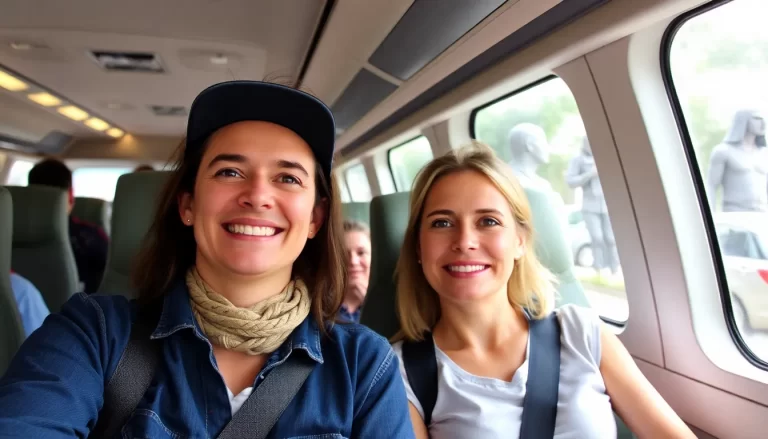After a prolonged period of solitude and confinement, many of us are eager to reclaim the freedom of movement that travel offers. The past year has reshaped our perspectives on what it means to explore, connect, and genuinely live. As the world begins to open up again, the nomadic lifestyle beckons once more, promising adventure and rediscovery.
Understanding the Nomadic Lifestyle
To be nomadic means to embrace a lifestyle characterized by continual movement, often in search of experiences, community, and adventure. Historically, nomads were people who moved in search of food, resources, or better climates. In today’s context, it encompasses those who choose to travel frequently, living in various locations rather than being tied to one place.
Modern nomadism can take many forms, including:
- Digital Nomads: Individuals who work remotely while traveling.
- Seasonal Travelers: Those who move based on climate or seasonal opportunities.
- Adventure Seekers: People who embark on short-term trips with the intention of exploring new cultures and landscapes.
Each type carries its own motivations and challenges, but all share a common thread: a desire for freedom and exploration.
Is a Nomadic Lifestyle Healthy?
The health impacts of a nomadic lifestyle can be both positive and negative. On one hand, the opportunity to explore new places and cultures can lead to enriching experiences and a broader worldview. However, the lifestyle also presents unique challenges that can affect mental and physical health.
Benefits include:
- Increased physical activity from exploring new environments.
- Exposure to diverse cultures, enhancing mental flexibility.
- Opportunities for social connections in different areas.
Conversely, potential downsides might involve:
- Inconsistent routines that can disrupt sleep and eating patterns.
- Feelings of loneliness or isolation while on the road.
- Challenges in maintaining strong relationships due to constant movement.
Ultimately, achieving a balance between exploration and personal well-being is essential for long-term sustainability in a nomadic lifestyle.
What Drives People to Live Nomadically?
A variety of factors can prompt individuals to adopt a nomadic lifestyle. Some of these motivations include:
- Desire for Freedom: Many seek to break free from the constraints of traditional living and embrace a life of adventure.
- Work Flexibility: Advances in technology have made remote work possible, allowing individuals to travel while maintaining their careers.
- Cultural Exploration: A yearning to experience different cultures, cuisines, and landscapes often drives people to travel.
- Change of Scenery: The monotony of daily life can push individuals to seek new experiences and environments.
Understanding these motivations can foster a deeper appreciation for the choices made by those who live this lifestyle.
Is Living a Nomadic Life Possible Today?
With the right mindset and resources, living a nomadic life is not just possible; it can be incredibly fulfilling. Here are some essential tips for making it a reality:
- Plan Financially: Ensure you have a budget and a reliable income source. This may involve remote work, freelancing, or savings.
- Embrace Minimalism: Reduce your belongings to essentials, making travel easier and less burdensome.
- Stay Organized: Keep track of travel itineraries, accommodation, and important documents in a digital format.
- Build a Community: Connect with other nomads through social media or online platforms to share experiences and advice.
While challenges abound, the rewards of a nomadic lifestyle—such as freedom, adventure, and personal growth—are often worth the effort.
The Impact of the Pandemic on Travel and Nomadism
COVID-19 had a profound effect on global travel, forcing many to pause their adventures and reassess their priorities. For many, the pandemic highlighted the importance of travel as a means of connection, exploration, and personal fulfillment.
As the world begins to recover, travelers are expressing a renewed enthusiasm for exploration. Vaccinations and improved safety protocols are paving the way for a resurgence in travel, with many eager to revisit favorite destinations and discover new ones.
However, the pandemic has also taught valuable lessons about:
- The importance of adaptability in travel plans.
- Finding joy in local exploration when international travel isn’t feasible.
- Fostering deeper connections with friends and family, whether near or far.
As we emerge from this period of uncertainty, the nomadic spirit is likely to thrive, driven by a desire to embrace the world anew.
Planning Your Next Adventure
With travel opportunities on the horizon, it’s essential to consider how best to plan your next adventure. Here are some steps to guide you:
- Choose Your Destination: Consider both popular and off-the-beaten-path locations that excite you.
- Set a Budget: Determine how much you can spend on travel, accommodations, food, and activities.
- Research Accommodations: Look for options that fit your budget and provide the amenities you need.
- Plan Activities: Identify key experiences or landmarks you want to visit.
- Stay Flexible: Be prepared to adapt your plans as circumstances change.
By taking these steps, you can create a travel itinerary that reflects your aspirations and accommodates the realities of the current world.
Examples of Successful Nomadic Lives
Many people have turned their nomadic aspirations into successful lifestyles. Here are a few notable examples:
- Remote Workers: Numerous professionals have transitioned to remote roles, allowing them to travel while maintaining their careers.
- Van Lifers: Individuals living in converted vans or RVs have created mobile homes, traveling across countries while enjoying the comforts of home.
- Travel Bloggers: Many have turned their travel experiences into thriving online businesses, sharing insights and tips with a global audience.
These examples serve as inspiration for those considering a similar path, illustrating that it’s possible to blend work, adventure, and personal fulfillment.







